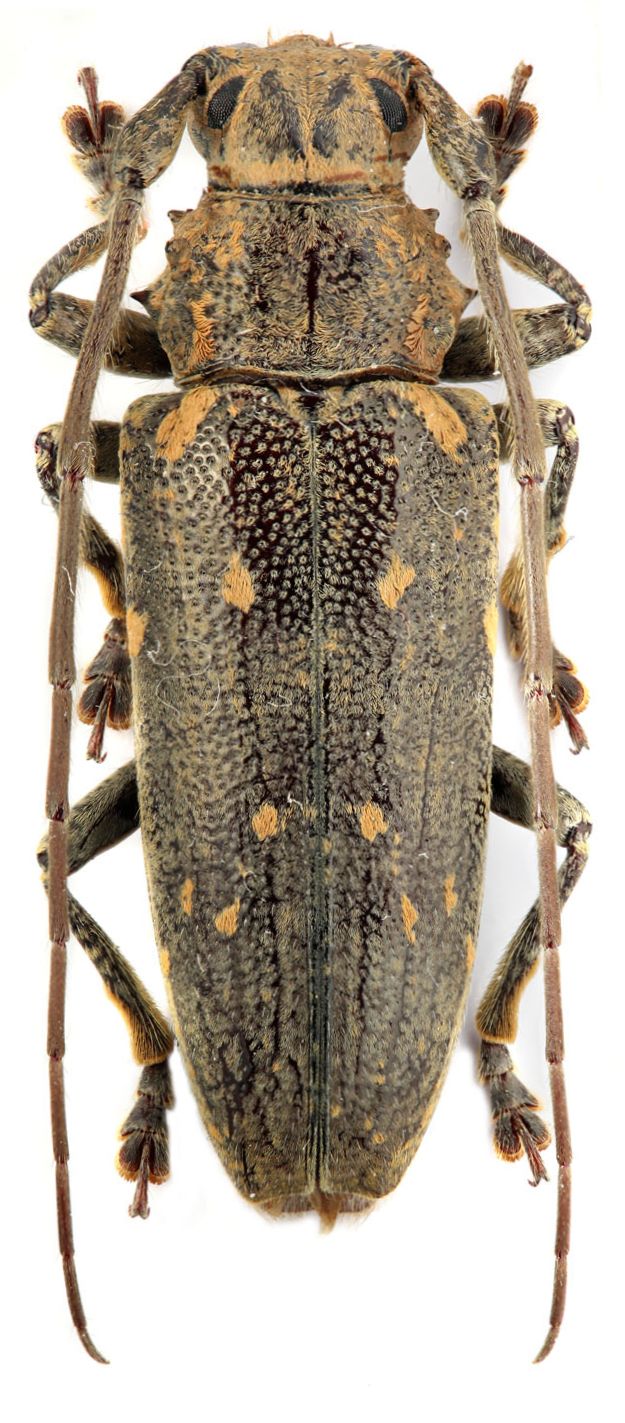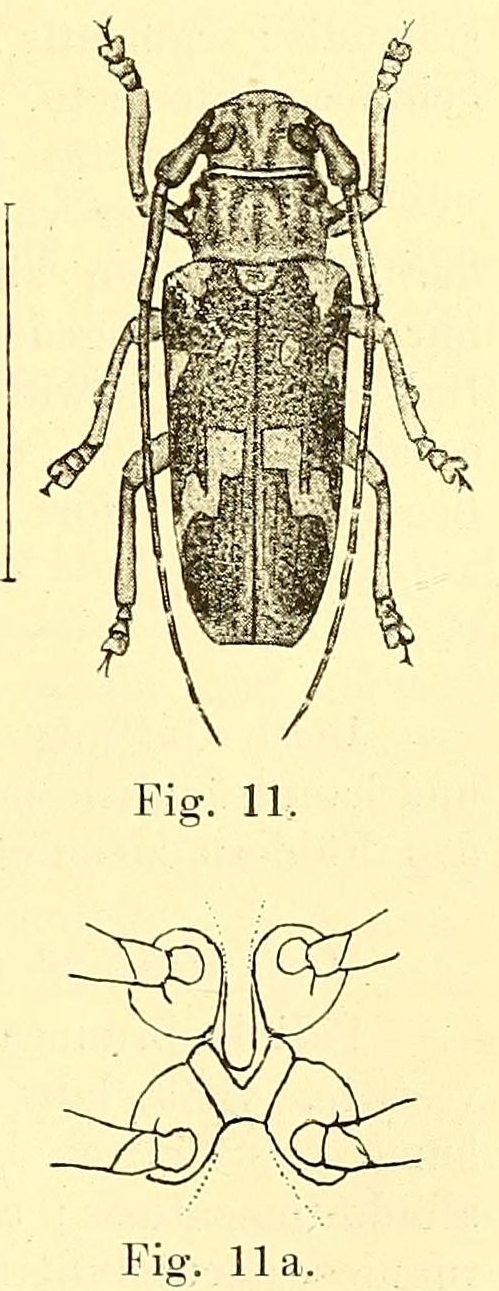| T O P I C R E V I E W |
| Max |
Posted - 16/10/2011 : 14:10:24

Dear Francesco, help me, pleas, with determination of this creature.
Homonoeini, in my view, but no another idea, unfortunately.
Solomon, Rannonga isl., 26 mm |
| 4 L A T E S T R E P L I E S (Newest First) |
| Max |
Posted - 17/10/2011 : 22:59:23
Respect!  Thank you! Thank you! |
| Francesco |
Posted - 17/10/2011 : 20:59:56

No, it is good.
The particular shape of the mesosternum (which envelops the prosternum) belongs to the genus Heteroclytomorpha. The picture at bottom should correspond to your species.
By using Breuning's keys, I reach H. sormeoides (Aurivillius, 1908), which has two subspecies: the typical one present in New Britain (at the left), and the ssp. salomonum Breuning 1950, recorded from the Solomon (unknown locality).
This subspecies has wider lateral spines, less punctured elytra, pronotal sides and elytral basal fourth densely marbled of ochre pubescence, apical fourth with small ochre spots.
It seems to correspond enough to your beetle... though the pronotal tubercles do not seem completely fit to your specimen. |
| Max |
Posted - 17/10/2011 : 19:19:42

Some problem with a photo, sorry... Not well? |
| Francesco |
Posted - 16/10/2011 : 15:13:59
With this multi-tuberculed prothorax reminds of the genus Homonoea, which is not present in the Solomon.
It corresponds to none of the species or genera recorded from the Solomon in Breuning (1950); nonetheless, I do not know the description of Pseudomulciber salomonum Breuning, 1961 (Ent. Arb. Mus. Frey, 12/1).
I'd need a lateral view of the pro- and mesosternum: however, if it does not belong to this last species, it is probably new. |
|
|


